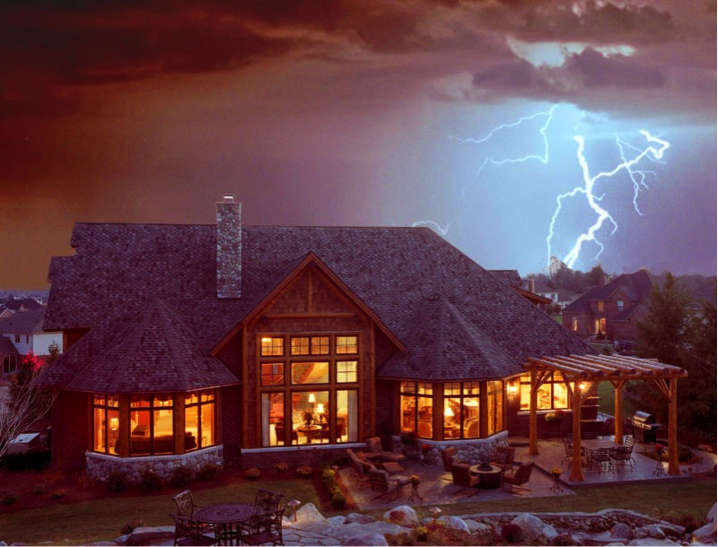Let There Be Light!
Selecting a Home Standby Generator System

We all know this feeling. But, it’s not always the weather that gets you…
The lights are dimmed just so. The caterers have just finished putting the final garnishes on the tapas spread. The jazzy Spotify list you designed over the past three weeks energizes every corner of your home. Champage bottles are chilled and ready to be popped at just the precise moment. But, unbeknownst to you, just down the road, Floyd has just left the Ports of Call Pub in his Chevy 2500 Duramax a bit happier than he should have and tries his best Mario Andretti imitation at Johnswood Cove curve, but… According to the Customer Service automated statement, it will take until 2pm tomorrow for the power company to have a new pole up and power restored. You swear this time you will act and finally have that gennie installed…
You pick a standby generator and an automatic transfer switch in a bundled package. Standby generators are rated by kilowatts, which basically measures the machine’s strength and endurance:
1. Strength – Standby Generator & Central AC
First, you need to decide if you want to power your central air conditioner during a blackout. In the southern states, life can be miserable during a sweltering summer blackout. Northerners might be willing to sacrifice the air conditioner to save some dough.
If you want to run your central air conditioner, you need a strong generator capable of turning over a high-powered motor. If you skimp on strength, don’t expect it to start.
To size your central air conditioner, simply take a good look at its metal data plate. It will tell you either its Tons, BTUs or Amps. Where to Find a Data Plate on an Air Conditioner – If the label is missing, check out your main circuit panel, most air conditioners use either a 30-Amp, 40-Amp or 50-Amp double-pole circuit breaker. The size of the breaker is typically a great indicator to the size of your air conditioner. For example, if you have a 4-ton (or 48,000 BTU) air conditioner, you’ll need at least a 17-kilowatt generator.
2. Endurance
Electric Breaker Panel – You’re buying a standby generator to replace the electricity lost from the utility company. If your electrical panel has a 200-amp main breaker, the maximum amount of electricity your home can consume is 200 amps. If you have 100-amp service, it’s 100-amps. Let’s be honest. You’re never using the maximum amount of electricity. Your consumption is somewhere between 0 and your maximum. Do you really need a massive 200-amp generator? In most cases, no. You don’t use that much electricity in the first place…unless you are throwing that party around Happy Hour. Then, you may want to consider a bit more insurance – the whole house generator.
Whole House Generators
The term “whole house” really depends on the size of your house. If you want to power a doghouse, a small camping generator will work. If you own a luxury home, you’ll need a massive generator. Whole house generators feature powerful engines that use pure brawn instead of brains to power … surprise … the whole house. Unfortunately, they aren’t cheap and the transfer switch is sold separately.
Whole house generators basically come in 4 sizes, ranging from 22-48 kilowatts. You determine your size based on the amount of electricity your home consumes. The majority of newer homes in the United States are built with 200-amp electrical service. In other words, again, the MAXIMUM amount of electricity your home can consume is 200-amps. In reality, it never really uses every amp of electricity. On hot summer days, the central air conditioner consumes a ton. At night, most homes barely use any. If you absolutely, positively want to replace every, single amp, you’ll need a 48-kilowatt whole house system, which generates all 200-amps of electricity. In most cases, however, you can save significant dollars by choosing a smaller model, which could still power the whole house anyway.



